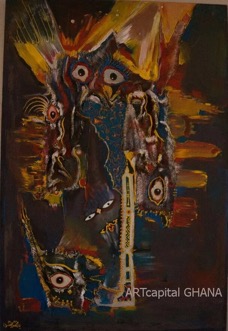[ON PUBLISHING THE PHOTOS OF VICTIMS OF TERROR ATTACKS]
“But there is a much more fundamental issue at the heart of this decision.
The coverage of “distant death”, especially in Africa, by much of the Western press remains deeply problematic.
Readers of the New York Times article argued that the newspaper would not have shown bodies of victims had this attack happened in the US or Europe.
The newspaper had tweeted that it treats photographs of the bodies of victims the same way everywhere.
But one cannot fail to notice that no such bodies are shown of the many terror victims in the US and Europe.”

“The newspaper’s reasoning thus becomes a fabrication, one that speaks to one world and not the other.
In the recent terrorist attacks in the US the New York Times has faithfully protected the dignity of victims.
Their stories have not been told with any less clarity and profundity.
The New York Times and the Daily Mail’s editorial decisions reveal deeply embedded institutional practices that lay bare the racialised lens that characterises the reporting of “distant deaths”.
Emotionally removed from the pain and misery of these far off events, distant deaths are often narrated as spectacles.”

“The victims are stripped of their dignity, becoming disposable objects of pity.
Images of their bodies are seen as acceptable to the otherwise delicate sensibilities of Western audiences.
The double standards aren’t accidental: they are institutionalised forms of narration of ‘the Other’.
Equally problematic is the lack of context provided in the coverage of such events.
Distant countries are flattened.”

“This is particularly true of Africa where coverage by the Western press is prone to “compression” – Nairobi becomes Kenya and Kenya becomes Africa.
This homogenisation of space fuels the temptation to fall back on the familiar, which unfortunately is an archive of stereotypes with little relevance.
This not only contributes to ignorance, it also undermines international efforts to fight terrorism.
In an environment where speed and sensation drive audiences to websites the temptation to be the first to report – and to have the most dramatic pictures (however unsettling) – seduces even the most respected news organisations.
Ultimately though, audiences are not presented with a balanced view of events and terrorism continues to flourish.”

“Terror attacks must be reported.
To do otherwise would be to erode important freedoms.
We must guard against the desire to clamp down on free speech and access to information.
This would be a triumph for terrorists.
But it’s not censorship to expect the media to extend some sympathy and dignity to the victims.
This must be the case in death as much as in life.”

“Sensationalism comes in many forms.
The New York Times and the Daily Mail’s use of that photograph was one of them.
These newspapers failed journalism.
More tragically they dishonoured the victims of the Nairobi Riverside attack.”
GEORGE OGOLA.
